Job Title vs. Role are two terms that tend to be heavily used in business. However, when it comes to small teams, only one of these is the best option for defining what team members do.
In this video, we’ll discuss the key differences between Job Title and Role, examples of both, and our recommendation on how small teams should organize their hierarchy.
Not a video person? No worries! We’ll cover all the main points in this article.
Intro to Job Title vs. Job Role
In this article, we’ll be answering a question we receive a lot on our YouTube channel:
What’s the difference between Job Title and Job Role?
We’ve used these terms numerous times interchangeably, so it’s about time we define what they are.
Let’s dive in!
To watch this explanation in video format, watch the video at the top of this article at timestamp 00:00.
What is a Job Title?
Job Title is probably the most popular term between the two. It’s one most people are familiar with.
Job Title = refers to the external name when someone works at a company or organization
Common job titles are:
-
- Marketing Director
-
- Sales Assistant
-
- CEO
Honestly, these are made-up names created by organizations to simplify classifying people in a traditional hierarchy. These job titles tend to be unique to a person; if nothing else, each person typically has one job title in most instances.
Job titles like CEO and Founder are pretty consistent across various industries. Again, it’s all just arbitrary and made up. Generally, one person = one job title, focusing on describing that person to the outside world.
To be blunt, job titles are basically just a marketing function.
When it comes to summarizing job titles, companies and organizations tend to use traditional Organizational Charts like this:
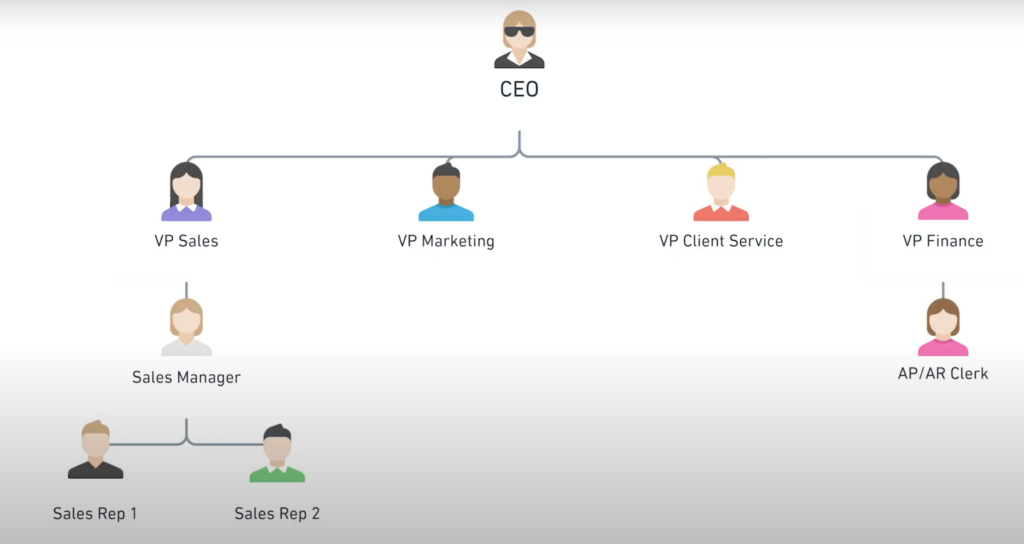
Each job title is represented by a tiny box connected by lines that typically show who people report to. Since each person has only one job title, they tend to only show up once in these organizational charts.
To watch this explanation in video format, watch the video at the top of this article at timestamp 00:20.
Job Titles aren’t perfect for small teams
The problem with job titles is they aren’t helpful for small teams. ProcessDriven’s mission is to help small teams systemize their operations — so we want to ensure they implement best practices.
When we’re looking at traditional organizational charts, let’s imagine we have a team of one. That chart would look something like this:

…Not very helpful, if you ask us.
Here is another example of a traditional org chart for a team of two:
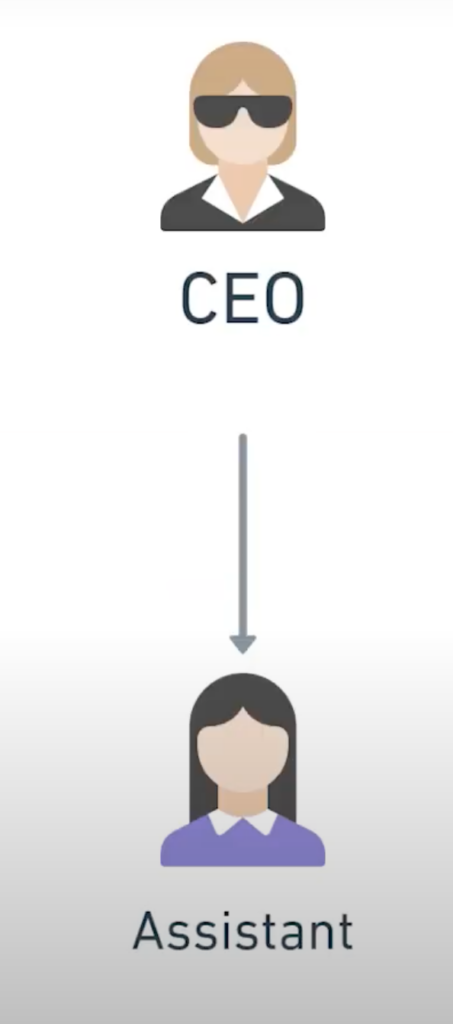
Again, this tells us nothing.
Job titles, in general, aren’t helpful and tell us nothing about what those people actually do. Unless we have a team of 500 people or more — where our business has built enough specializations where their job titles might tell us what we do in a day — job titles do not help us.
When we’re a small team, it’s not so clear what each person does in a day based on their job title. Even if someone has the job title Assistant, Founder, or Owner — they’re doing so many things on any given day.
If we told you that Layla is the CEO of ProcessDriven, what does she do in a day exactly? You have no idea. (Hint: it’s a lot!) Chances are, if your job title is CEO and you run a small team, you wear many hats.
In a larger organization, job titles are much more specific. There might be a job title like Level 1 Support Assistant. This makes a lot more sense. Job titles carry too much ambiguity for the rest of us on small teams.
To watch this explanation in video format, watch the video at the top of this article at timestamp 01:50.
What is a Job Role?
Job Role = what someone actually does.
A role is a collection of responsibilities, duties, actions, and tasks. When you mix them all and slap a name on them, we have a job role!
Unlike job titles, job roles tend not to be public facing. Additionally, it doesn’t necessarily have to be one person per role.
A solopreneur could have ten or more roles. Their org chart would look something like this:
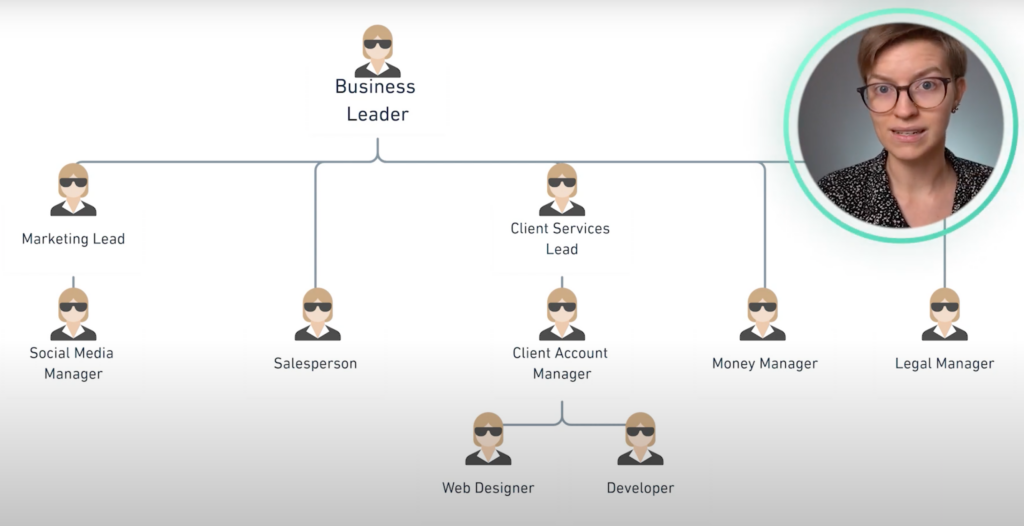
All of these roles are done by the same person, but there are still ten roles. In most small teams, we’ll find that most team members have at least two roles in their official job description. That org chart might look like this:
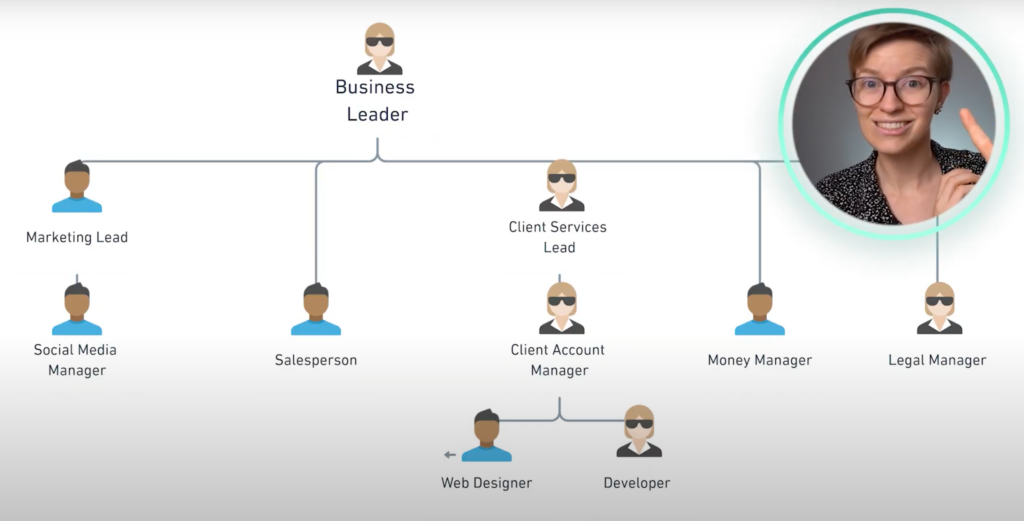
This dynamic is standard among small teams because they can’t afford 50 specialists. Instead, we can have five team members, each doing ten different things.
The last key distinction between job title and role is what functional area tends to own these terms.
As we stated before, when it comes to job titles, we’re focusing on a Marketing function. Whether marketing in terms of recruiting and hiring or marketing in the pure sense of the word, this is the function where job titles come in.
Think of job titles as a marketing function in the following example: Bill needs his fancy business card that says VP of Sales. Bill is marketing himself to the outside world. However, Bill’s job title serves no purpose but to inform everyone else how important he is.
Whereas with job roles, we’re focusing on the Operations, Project Management, or Integrator functions. This is focused on results and actions. As a result, job role names tend not to be as sexy as job roles because well…no one cares about fancy titles on small teams. However, they are more descriptive than job titles.
To summarize, job titles are basically fluff that serves no actual purpose, whereas job roles are boring but describe almost everything.
This distinction is why we recommend that our clients utilize job roles as a supplement. Job roles don’t need to replace job titles entirely, but they should give us a more concrete and operations-focused way of keeping track of who does what.
Job roles are perfect for small, savvy, and agile teams that many of you are on or are building. They can also be great units of measure for systemizing.
To watch this explanation in video format, watch the video at the top of this article at timestamp 03:29.
Who creates Job Roles vs. Job Titles?
We now know the key differences between job titles and roles. So who should create them?
For us, the easiest way to define a job role (as opposed to a job title) is to determine what our business does regarding processes and systems, and then we group them. Our personal preference is color coding, but to each their own!
To watch this explanation in video format, watch the video at the top of this article at timestamp 05:38.
How to define Job Roles from business processes
If you’re not clear on how exactly to define your business processes, check out our free strategy training. This is the precursor you need to start defining your job roles.
If, after that training, you’re ready for more and want more content about job roles, responsibilities, and systemization focused on small teams, check out the ProcessDriven Membership.
We do a deep dive on these topics, and they tend to be transformative for small teams who are used to traditional org charts like the ones we showed you.
You’ll go from this:
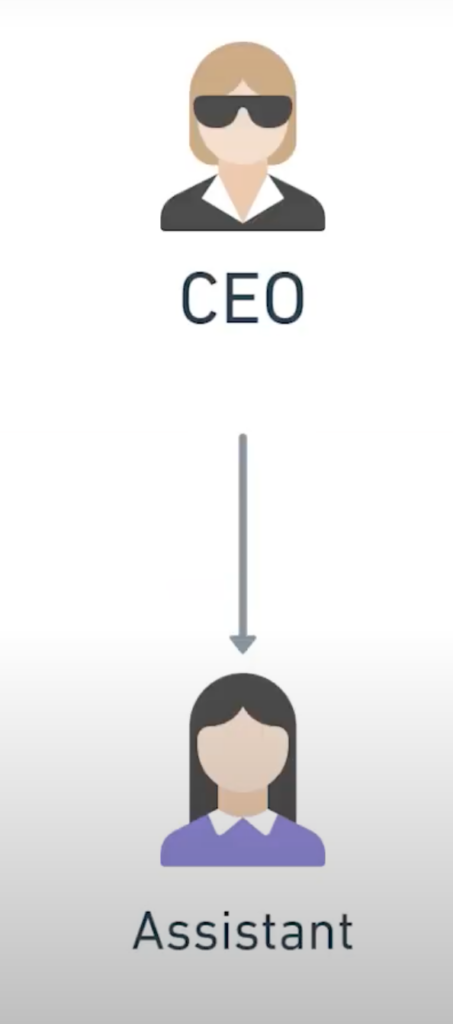
To this:
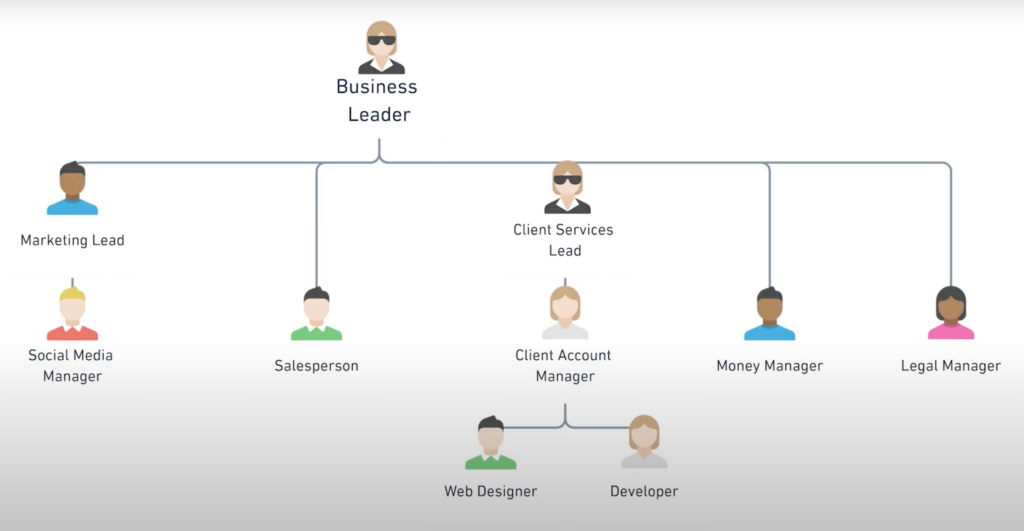
Until next time, enjoy the process!
For a small team, creating roles without too much structure means keeping roles clear but allowing flexibility. Instead of listing strict tasks, focus on what each person is expected to achieve. This lets team members work together in a way that fits their skills without feeling limited.
Using roles instead of titles helps everyone focus on what they’re good at, not just a job label. This way, team members can step in where needed, which makes work flow better and the team more productive.
To ease worries, talk about how roles fit with people’s skills and support growth. Getting team members involved in shaping roles can make them feel more comfortable and less nervous about the changes.
